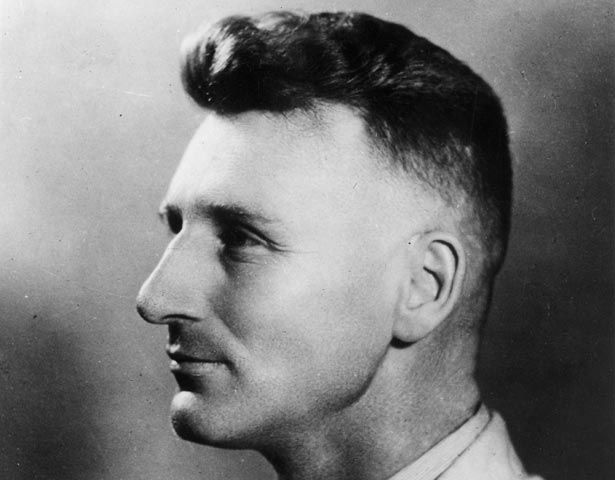
Intrigued by what he had read about China, Alley left New Zealand in December 1926 ‘to go and have a look at the Chinese revolution'. He would stay for 60 years, becoming one of China's best-known and best-loved foreigners.
By the age of 29 Rewi Alley had done little that would set him apart from any of his contemporaries. Like thousands of other young New Zealand men he served overseas during the First World War. Then, on his return, he and an old school friend took advantage of a returned soldiers' settlement scheme to purchase land in Taranaki for a sheep farm. But their efforts to break in and farm the land were marred by low wool prices. After ‘six years of loneliness and struggle', his friend advised that he intended to get married and Alley decided to leave the land to him and head to China to see the revolution at first hand.
Alley arrived in China on 21 April 1927. Over the next 10 years, working variously as a fire officer, factory inspector and relief worker, he laboured among the Chinese trying to improve their living and working conditions. He came to greater prominence during the Japanese invasion of China in 1937, after he was involved in efforts to found the Association of Chinese Industrial Cooperatives (INDUSCO), commonly known by the slogan Alley coined, ‘Gung Ho/Work Together'. Gung Ho aimed to organise small-scale self-supporting cooperatives which created employment for workers, while continuing production to support resistance against the Japanese. A Time magazine article from April 1940 noted:
The advantages of cooperatives were many ... The units were mobile, easily disguised, easily housed, and were not, like big factories, obvious targets for Japanese bombers. They supplied military needs which no other source in China could produce so efficiently ... Above all they provided millions of refugees who trekked west on the heels of freedom with the hope of lasting relief in the form of jobs ... Cooperatives entirely revitalized whole towns.
As part of the Gung Ho movement Alley envisaged training young Chinese in the skills that the co-operatives needed. In 1940 he was involved in setting up schools in various parts of the country. Some failed, but one in a tiny village called Shuangshipu (Feng Xi'an) was revitalised in 1941 under the leadership of George Hogg. Alley returned there often and assisted in its move to Shandan in December 1942, when the school was threatened by the Japanese advance. After Hogg died from tetanus in July 1945 Alley took over as headmaster. He continued at the school after the Chinese Communist Party came to power in 1949 but gradually lost control to local party officials.
By 1953 Alley had settled in Beijing. He immersed himself in writing about China and travelled extensively, speaking on behalf of international peace agencies, such as the World Peace Council. But his great achievements, Gung Ho and the school at Shandan, were never far from his mind. In his 80s he and other Gung Ho veterans successfully set about reviving the organisation. He also conceived a plan for a new Shandan School that would meet the present-day needs of the region. It opened on 21 April 1987, the 60th anniversary of his arrival in China.
Before and after his death on 27 December 1987 the New Zealand and Chinese governments honoured Alley for his work in China. They have continued to do so in recent decades. In 1997 and 2007 events were held to mark the 100th and 110th anniversary of his birth.
Find out more:
How to cite this page
'Rewi Alley', URL: https://nzhistory.govt.nz/people/rewi-alley, (Ministry for Culture and Heritage), updated 8-Nov-2017


Community contributions